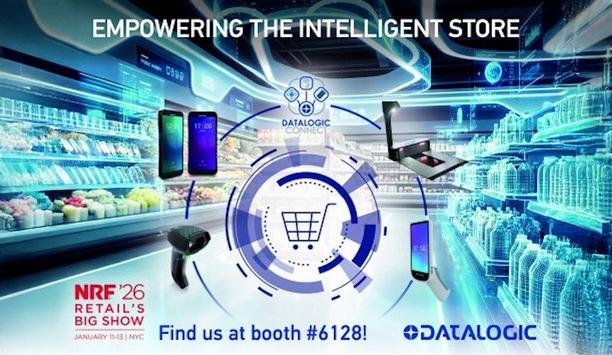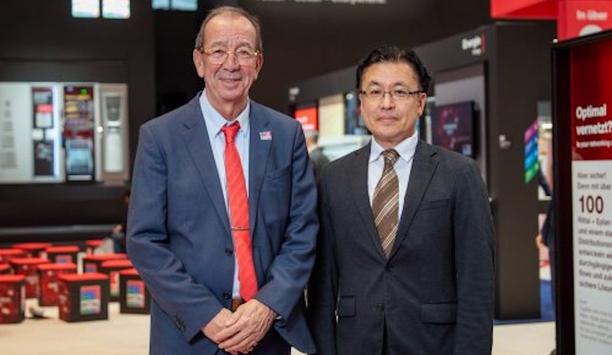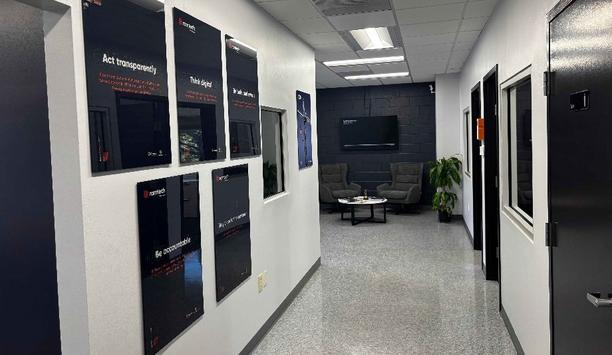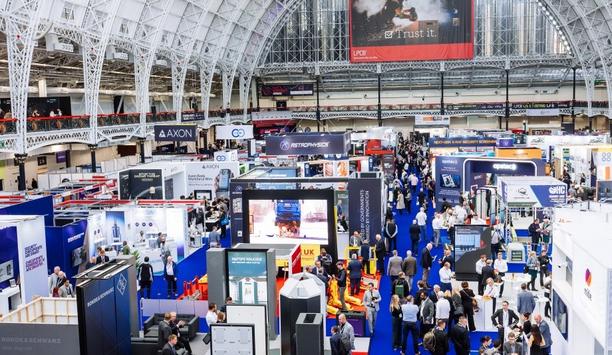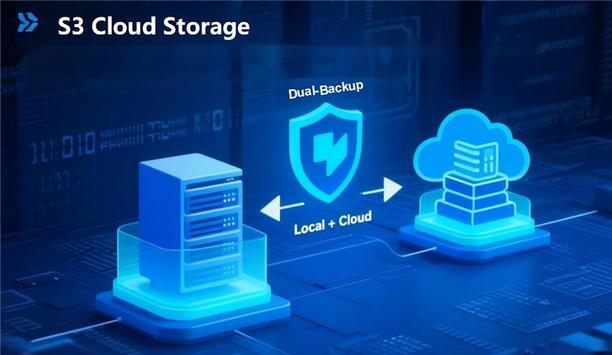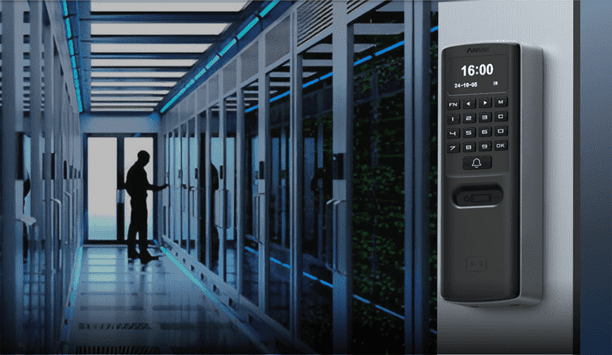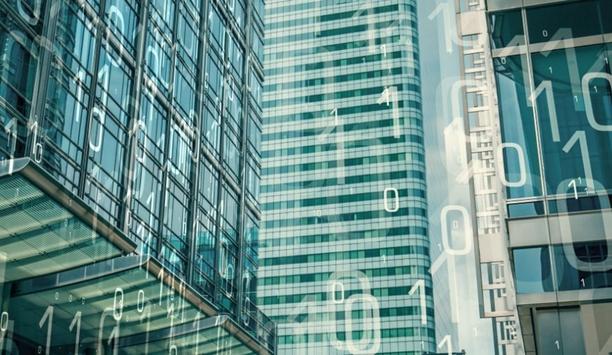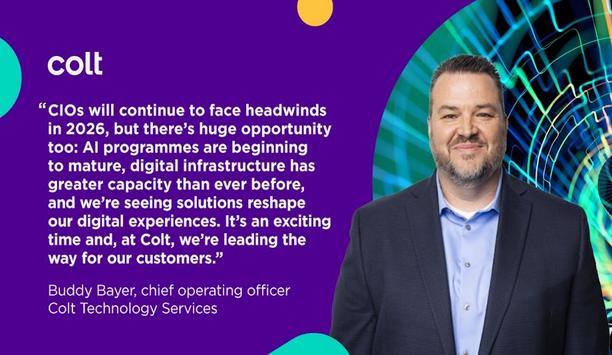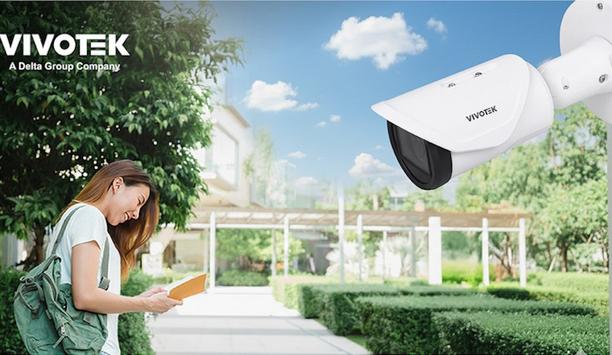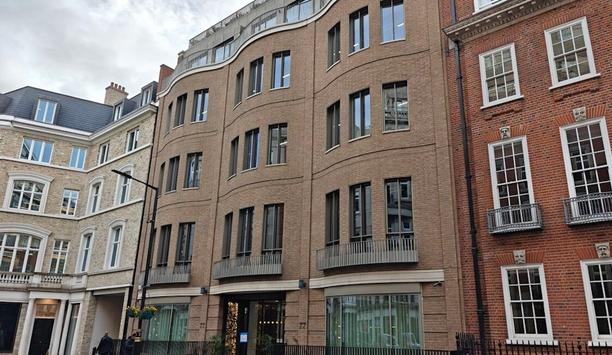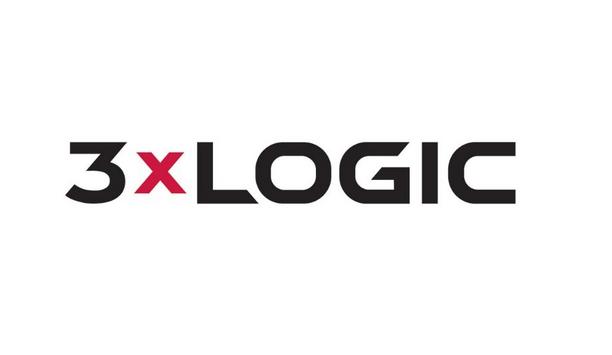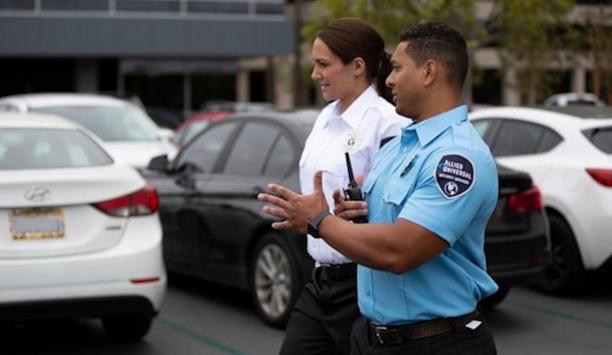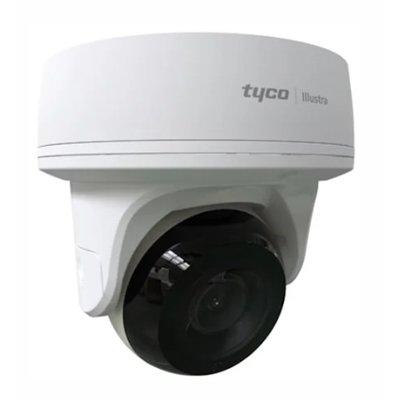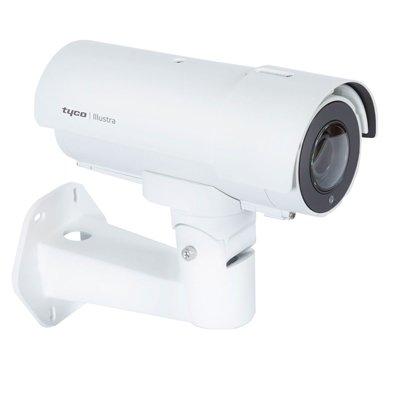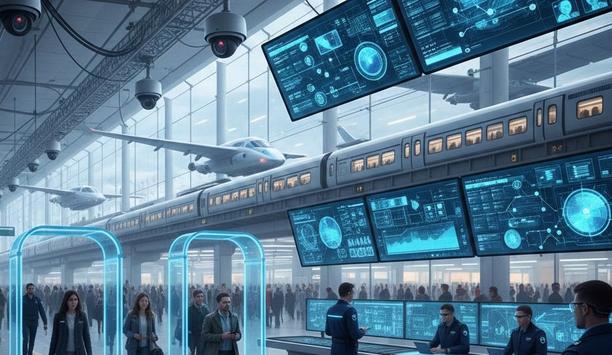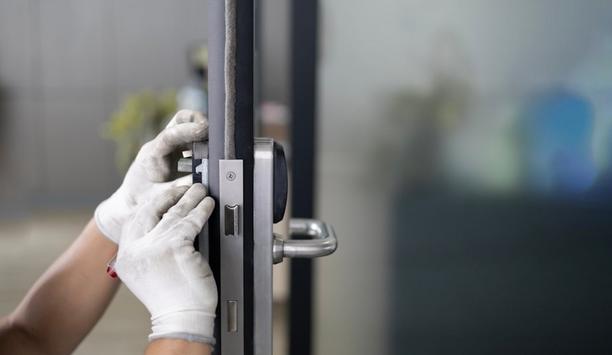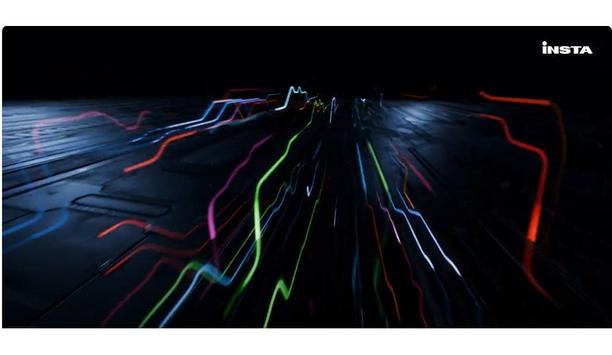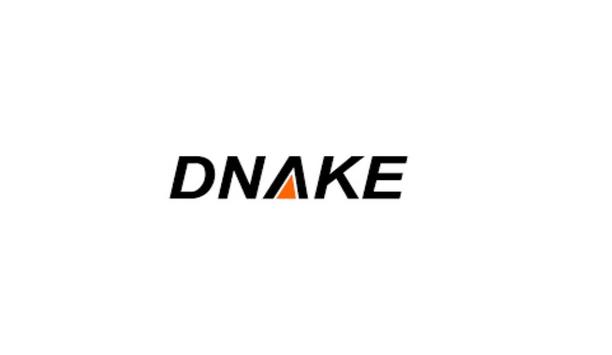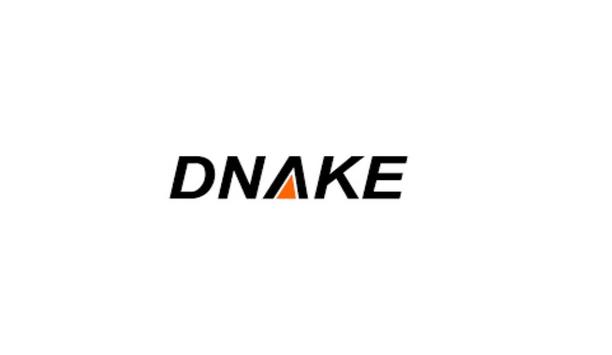Biometric Security
Alcatraz, the pioneer in facial biometric authentication for physical access, now announced the successful completion of its SOC 2 examination as of November 7, 2025. The independent audit was conducted by A-LIGN, the pioneering provider in cybersecurity compliance trusted by more than 4,000 global organizations. Biometric access with confidence “Trust in biometric systems depends on strong data stewardship,” said Tina D’Agostin, CEO of Alcatraz. “At Alcatraz, we work...
Datalogic, a pioneer in automatic data capture and process automation, will demonstrate how its integrated portfolio is empowering the intelligent store at NRF 2026, thanks to AI-driven integration. Visitors to Booth 6128 will discover how advanced scanning, mobile computing, RFID, and IoT solutions are driving measurable outcomes for retailers: better customer loyalty, more revenue, fewer errors, higher labor efficiency, accelerated in-store productivity, and the creation of seamless customer...
Deep Sentinel, the pioneer in AI-powered proactive video surveillance with real-time human intervention, now announced the launch of its Mobile Monitoring Trailer — a fully mobile, solar-powered security platform that delivers instant access to Deep Sentinel’s remote live guard monitoring anywhere, including places where power and permanent infrastructure are unavailable. Purpose-built for high-value outdoor environments, such as auto and parking lots, construction sites, industrial...
The contract was signed, live at the SPS in Nuremberg, Germany: CADENAS is now the newest member of the Eplan Partner Network. CADENAS Managing Director Terry Jonen and Eplan Managing Director Haluk Menderes signed the new technology partnership agreement on 26 November 2025. The stated goal of the cooperation is the expanded provision of technical device data via the Eplan Data Portal, which will be implemented using a direct interface between the Data Portal and the CADENAS platform 3Dfi...
AI is one of the fastest-growing technologies in the history of modern business, with the ability to revolutionize industries, optimize operations, and drive innovation, but it is also introducing security gaps, risks, and vulnerabilities. According to McKinsey, 78% of organizations are using AI in at least one business function, up from 55% two years ago. As a result, 73% of them are investing in AI-specific security tools, either with new or existing budgets, according to the 2025 Thales Data...
WatchGuard® Technologies now announced that its endpoint security solution delivered outstanding performance in the latest MITRE ATT&CK® Enterprise Round 7 (ER7) Evaluation. The results highlight WatchGuard’s ability to combine strong threat prevention with low-noise detection, giving Managed Service Providers (MSPs) a reliable and efficient way to deliver high-quality security services at scale. WatchGuard’s commitment In the Windows “Hermes” scenario, Wat...
News
Pioneer wireless fire safety solutions provider Ramtech has established its first international base, opening a new U.S. office in Charlotte, North Carolina. The move reinforces the company’s commitment to delivering modern fire and safety across the construction industry and establishing a full U.S. supply chain. By establishing a permanent presence on the Atlantic coast, Ramtech, which is headquartered in Nottingham, will enhance efficiency, mobilization and reliable delivery of safety solutions for contractors nationwide through the provision of direct access to equipment, training and support. National service coverage James Pecz, head of North America, Middle East and Global CX at Ramtech, said: “We are proud to establish a permanent presence in the U.S., marking an important milestone in Ramtech’s global growth.” “This launch demonstrates our commitment not only to partners and clients across the U.S., but also reinforces the strength of our business model, proven in the UK, and its ability to scale internationally. Our Charlotte office brings us closer to delivering safety solutions efficiently and reliably, supported by a full U.S. supply chain and national service coverage.” Supporting major construction firms Ramtech has been operating in the U.S. for seven years, supporting major construction firms including Turner, PCL and Barton Malow, as well as the maritime defense sector. Its WES system, successfully deployed on high-profile UK projects such as the Everton FC Hill Dickinson Stadium and Thames Tideway, has also protected more than 350 workers on major international projects, including Hudson Detroit ($1B) and Gaylord Pacific Resort. The company partners with over a dozen U.S. distributors, including Space Age Electronics. State-specific partners While the majority of Ramtech’s U.S. experience and recognition has been in the North and South East regions, it is keen to expand this reach across the South and Midwest. Charlotte will be an anchor for the firm, while it looks to cover new ground with its regional and state-specific partners. James added: “As we continue to grow our presence in the U.S., this step ensures that Ramtech is not just responding to the currency of industry needs, but actively shaping the future of wireless evacuation solutions, helping protect workers and facilities at every stage of a project.” The opening was celebrated with a ribbon-cutting ceremony led by Bruna Pacios Esposito, Ramtech’s business unit director, alongside Orama managing director Giorgio Koursaris. The day involved product innovations presented by product marketing manager Jiayao Wang.
Security-Net, Inc., a network of pioneering security system integrators, is pleased to welcome its newest member, Mala Grover, president and chief executive officer of Digitronics, based in Herndon, Va. With the addition of Grover, Security-Net strengthens its presence in the Mid-Atlantic region, including Washington, D.C., Maryland, Virginia, and West Virginia, while gaining a member with deep expertise in federal government security projects. Advanced electronic security systems Grover brings three decades of experience in the security industry, including more than 20 years pioneering Digitronics, a woman-owned small business specializing in design, installation, and support of advanced electronic security systems. The company is uniquely positioned in the federal sector, maintaining CSEIP certification and UL 2050 certification, which enable Digitronics to serve highly regulated government environments and protect critical national infrastructure. In recent years, the company has expanded its footprint into the commercial market, offering the same level of rigorous design and implementation expertise to private sector clients. Project management, bidding, and integration practices “Security-Net is truly an elite group of seasoned companies spread across the United States,” said Grover. “One of the biggest benefits is the network itself and having trusted partners across the country who I can reach out to for support on projects or team with to get them completed on time and within budget. It’s like having an extended arm that helps me deliver the best possible service to my customers.” Through her participation in Security-Net, Grover is eager to both contribute her federal sector expertise and learn from her peers’ extensive experience in project management, bidding, and integration practices. She believes the relationships she builds through Security-Net will help her business to continue to grow, innovate, and evolve. Security-Net’s collective capabilities With Digitronics joining Security-Net, the organization gains additional depth in federal government integration and expands its footprint in the important Washington, D.C. corridor, which is a region known for its complex and high-security installations. "Mala brings an exceptional level of professionalism and technical expertise to the group,” said Roy Stephenson, director of business development for Utah Yamas Controls, and a long-time Security-Net member. “Her company’s experience in the federal sector, along with its UL 2050 certification, adds a tremendous amount of value to Security-Net’s collective capabilities.” Prior roles of Grover Grover entered the security industry in 1995 after beginning her career in international business. What started as a single $450 project grew into a thriving company managing large-scale federal installations, including projects with the U.S. Department of Education. Today, Digitronics employs 23 people, including Grover’s son, who is helping expand the company’s commercial business. Security-Net currently has 19 members with an extensive geographical footprint to serve customers throughout the United States, Canada, and internationally. Together, members share best practices, including technical knowledge and training initiatives, and partner on customer projects that extend beyond a company’s geographic reach to ensure national account-level service.
DigiCert, a pioneer in intelligent trust, unveiled its 2026 Security Predictions, forecasting how AI, quantum computing, and automation will reshape global trust frameworks. The predictions highlight a pivotal shift toward AI integrity, resilience, and quantum readiness as core tenets of intelligent trust. DigiCert’s full predictions and outlook for the new year can be found at DigiCert’s blog. 1. AI Integrity Becomes the New Trust Standard: AI authenticity will overtake data confidentiality as the top enterprise trust concern. Organizations will require verifiable identity, provenance, and tracking for every model, dataset, and autonomous agent. 2. Resilience Becomes the New Compliance: Resilience will shift from an IT goal to a board-level mandate as regulations like Digital Operational Resilience Act (DORA) and new global standards tighten expectations. Organizations will be required to prove that their DNS, identity, and certificate systems can withstand disruption, with uptime and recoverability directly tied to financial and operational stability. 3. Automation Accelerates as Certificate Lifespans Shrink: With TLS certificate lifetimes reducing to 200 days as part of the phased reduction to 47 days, the effort associated with manual renewal doubles. Organizations will adopt full-stack automation to eliminate outages and create self-healing trust ecosystems. 4. Quantum Computing Puts Encryption on Notice: The first practical quantum computer capable of solving meaningful problems will emerge. Organizations beginning their initial pilots will discover interoperability hurdles as certificate and software ecosystems adapt to quantum-safe requirements. 5. Content Authenticity Moves from Principle to Policy: Governments and major platforms will begin enforcing C2PA for AI-generated and edited content. Watermarking and cryptographic provenance will become required for distribution across news, social, and commerce. 6. Federated PKI Reinvented for the Post-Chrome Era: Organizations will modernize private PKI as Chrome phases out legacy client authentication and Microsoft sunsets old CA architectures. Identity will shift toward cloud-native, automated, and passwordless trust models. 7. Email Trust Redefined: Verified Identities Take the Lead: AI-driven phishing will push enterprises to standardize on Verified Mark Certificates and strict DMARC enforcement. Verified sender identity will become the baseline expectation for secure, enterprise-grade communication. 8. Machine Identities Outnumber Humans 100:1, and PQC Becomes Mandatory: Connected devices and AI agents will surpass human identities by two orders of magnitude. PQC-ready identity frameworks will become mandatory as standards bodies embed quantum-safe algorithms into device ecosystems. Integrity across every digital interaction “Security in 2026 won’t just be about protecting systems, it will be about proving integrity across every digital interaction,” said Jason Sabin, Chief Technology Officer at DigiCert. “As AI accelerates, machine identities multiply, and quantum computing advances, intelligent trust will become the foundation that keeps businesses resilient, verifiable, and secure. The organizations that embrace automation, provenance, and quantum-safe readiness now will define the trust landscape for the next decade.”
Iris officially launches today, introducing a platform that transforms how cameras are controlled, and productions are managed. By turning virtually any PTZ camera into a software-connected, remotely controlled device, Iris eliminates the traditional constraints of camera operation, such as hardware dependencies, inconsistent control, and the lack of on-site crews. The platform removes long-standing pain points for production teams: fragmented control tools and protocols across brands, the need for constant manual adjustments, and the inherent limits of on-site equipment and staffing. Iris changes this by providing universal, browser-based control that works across camera brands and enables full production management from anywhere in the world. Traditionally manual tasks The platform's AI-powered automation handles traditionally manual tasks, like real-time subject tracking and framing, allowing operators to focus on creative decisions rather than technical adjustments. Its intuitive interface ensures that non-technical users can achieve professional results, democratising access to advanced capabilities that deliver the production quality of larger-budget operations. The impact extends far beyond individual productions. Organizations using Iris can scale their operations without proportionally increasing their costs or crew size. A single operator can manage multiple cameras across multiple locations, while remote teams collaborate in real time as if they were in the same room. This scalability opens doors to productions that were previously impractical or impossible, from small community theater livestreams to global corporate events spanning multiple time zones. PTZ camera manufacturers Through the Iris desktop application, production teams can quickly discover, link to, and control over 300 models of cameras on their local network. For those using Iris-enabled cameras, the platform is built directly into the device’s firmware, connecting instantly to the cloud without any additional hardware or complex setup. This direct-to-cloud capability debuts alongside broad support from PTZ camera manufacturers, including AIDA, BirdDog, Bolin, BZBGear, Everet, HDKATOV, Lumens, Marshall, NEOiD, Telycam, and Z CAM. Together, these integrations position Iris as the leading software standard for camera control. Iris-enabled firmware “Setup now takes minutes, not hours,” said Noah Johnson, Founder of Iris. “Our custom drivers unlock every camera feature—not just the common ones—and our intelligent framing tools make operating cameras feel natural, fast, and cinematic. And because Iris lives in the cloud, your cameras are now truly remote—you can manage, access, and control them from anywhere, anytime.” Iris is designed to ensure that no production is left behind, even if its cameras aren’t equipped with Iris-enabled firmware. With the innovative Iris desktop utility and browser-based interface, virtually any PTZ camera can be connected and controlled without hardware. This bridging software allows production teams to unlock advanced automation and PTZ control features in cameras from brands not yet natively supported, ensuring that even legacy or third-party hardware can access the platform’s capabilities, extending equipment life and maximising investment. Professional-looking livestreams The Iris platform is a reimagining of what’s possible in nearly any type of production. Houses of worship can empower volunteer teams to deliver professional-looking livestreams using automation and visual effects. Educational institutions can manage cameras across lecture halls with a centralised, remote-control room. Corporate teams can produce executive communications and all-hands meetings across multiple offices. Media producers can collaborate in real time across locations for seamless productions. With Iris, even remote interviews become effortless: ship a camera, plug it in, and instantly access the video and controls in their Iris account. Delivering exceptional experiences By removing traditional barriers to camera control and production management, Iris empowers creators to focus on what matters most: telling compelling stories and delivering exceptional experiences. Users can update any Iris-enabled camera firmware to instantly enhance their PTZ camera. The Iris platform is available at tryiris.ai for content producers to begin connecting cameras immediately. Additionally, its software is included in select camera manufacturers through simple firmware updates. The platform's flexible pricing model—which includes a free tier for individuals whose productions use one camera source—means users only pay for the size of productions they produce, making professional-grade capabilities accessible to organizations of all sizes. With plug-and-play setup and an intuitive interface, teams can begin transforming their workflows within minutes. What camera manufacturers say about Iris AIDA “From local studios to global stages, Iris gives our cameras the power to go wherever our customers do – secure, remote, and crystal-clear, without compromise.” - John Wu, Marketing at AIDA Imaging. BirdDog “At BirdDog, we’re committed to giving creators the freedom to work their way. Partnering with Iris extends that flexibility, adding powerful and intuitive way to control our cameras from anywhere, helping creators focus on what matters most - telling great stories.”- Dan Miall, CEO at BirdDog. Intuitive remote management Bolin “Bolin has always focused on technology that reduces complexity and helps users do more with less. It's about removing what they don't need. Iris builds on that by enhancing the capabilities of our cameras. With intelligent control, advanced tracking, and powerful tools in one place, it brings a new level of simplicity and capability to remote production.” - Sapan Doshi, Product Manager, Bolin. BZBGear “People want to produce broadcast-quality content with simple, flexible control. BZBGEAR PTZ cameras combined with Iris universal camera control deliver exactly that, enabling more efficient and seamless productions through intuitive remote management from anywhere in the world.” – Eugene Bocharov, CEO and President of BZBGEAR. Advanced PTZ cameras Everet Imaging "The combination of Everet cameras and the Iris platform gives users the tools to manage complex productions effortlessly. From cloud-based control to AI features, it’s a natural fit for the fast-moving, professional workflows we support.” - Michaël Hegeman, General Manager, Everet Imaging HDKATOV “At HDKATOV, we’re redefining the future of production with our latest integration of cutting-edge camera technology and the Iris platform. By combining our advanced PTZ cameras with Iris’s cloud-based control and AI features, we’re providing users with the tools to manage complex productions effortlessly. Whether in the studio or on location, this seamless integration ensures that our customers can streamline their workflows, achieving professional results with remarkable ease.” – Helen Huang, Senior Manager at HDKATOV Next-generation AI automation Lumens “Organizations worldwide, from corporate and education to government sectors, are embracing cloud-based AV workflows and supporting distributed environments. By integrating Iris directly into our PTZ cameras, we’re enabling customers as well as integrators to standardize and simplify remote-control capabilities, remove hardware and system complexity, and reduce on-site labor and setup time.” – Chester Lee, VP of Sales at Lumens USA, and Joris Nevens, General Manager at Lumens Europe Marshall "Iris solves real problems that production teams face every day. By moving camera control to the cloud and adding next-generation AI automation, we're giving Marshall customers the freedom to focus on creativity while the technology handles the technical details. Our partnership with Iris is focused on making remote production practical, affordable, and scalable for all users.” - Bernie Keach, Broadcast AV Consultant, Marshall Professional PTZ cameras NEOiD “Cloud-based workflows are transforming every aspect of video production. NEOiD is excited to work with Iris to bring this innovation to our customers, enabling them to scale their operations without the traditional constraints of hardware and location.” - Laurindo Almeida, CEO at NEOiD Telycam “By integrating Iris into our camera portfolio, we’re taking another step toward providing intelligent, future-ready solutions that elevate the user experience. This partnership represents a major leap forward in bringing cloud-based control and automation to our customers, and we believe it will redefine what’s possible in professional video production.” - Jenny Liu, Head of Sales and Marketing at Telycam Z CAM “The collaboration with Iris enhances our professional PTZ cameras' capabilities and provides users with a powerful and flexible solution for modern productions. The Z CAM P2-R1 is already known for its exceptional image quality, and with Iris integration it is now even more versatile.” – Kinson Loo, CEO of Z CAM.
International Security Expo is thrilled to announce that it has appointed a new chair. Figen Murray OBE, initiator and lead campaigner for Martyn's Law, will be taking on the role effective immediately. As chair, Figen will help steer the future direction and growth of International Security Expo, whilst also ensuring it best serves the needs of the industry. She will also lead the Advisory Council that is comprised of an outstanding selection of the industry’s foremost experts, representing a broad range of sectors and Government. Figen will take over from Angela Essel, senior account director – national security at Thales UK, and former head of JSaRC, Home Office, who has held the position for the past two years. Counter terrorism legislation Having transformed her grief into a powerful movement for change, Figen is the initiator behind the campaign to introduce counter terrorism legislation – the Terrorism (Protection of Premises) Act 2025 – informally known as Martyn’s Law, after her son, Martyn Hett, was tragically killed alongside 21 others at the Manchester Arena terrorist attack on 22 May 2017. Her tireless campaigning has secured national support from cross-party politicians, the security industry, businesses and the public, to introduce legislation that will better protect venues and the public from the potential impact of a terrorist attack. Homeland and international security Beyond Figen’s legislative work, she has achieved a distinction in a counter terrorism master’s degree from the University of Lancashire. Figen’s expertise and dedication to making Britain safer saw her awarded an OBE in the 2022 New Year’s Honours List. There are very few people who have been able to bring together all elements of the security industry in such a unifying manner, whilst at the same time effecting change at a legislative level. This sees Figen ideally placed to take on the role of chair, as International Security Expo brings together Government, Industry, Academia and the entire end-user community from all corners of the world, with a key focus on both homeland and international security, and countering terrorism. Global security industry Speaking about her appointment to the role Figen says, “It is a real privilege and honor to become chair of International Security Expo. For many years it has been clear how important this event is to the global security industry – from the wealth of innovation on display to the incredible speakers who impart their knowledge and experience, along with the unique opportunity to engage with the UK Government.” “I know first-hand just how valuable this has been in the long journey to get Martyn's Law signed into legislation. The event is one of my highlights of the year and I am extremely excited to take on this prestigious role, lead the Advisory Council and help steer the direction of International Security Expo so it continues as one of the world's leading events for countering terrorism and keeping us all safe.” Ensuring public safety Angela Essel says: “It has been a great pleasure to serve as chairwoman for this fantastic event and to see how many people view it as a must-attend date in their calendar. These past two editions of International Security Expo have been the best ever and I am delighted to have helped contribute towards their success. Figen’s drive and resolve is awe-inspiring and I have no doubt she will make a superb chair and I wish her the best of luck in the role.” Rachael Shattock, Group Event Director, added: “We are extremely honored to welcome Figen as chair of International Security Expo. Watching her tireless campaigning over the years has been truly inspirational and I cannot think of anyone better to bring the energy and passion for ensuring public safety to the event. As the event continues to go from strength to strength, this is the ideal time to welcome Figen aboard and the whole team and I are very excited to work with her. I would also like to thank Angela for the fantastic work she has done as chairwoman over the past two years in helping make the event unmissable.”
Zimperium, the world's pioneer in mobile security, now announced that Alistaire Davidson has joined the company as Chief Financial Officer, reporting directly to CEO Shridhar Mittal. Alistaire brings more than 20 years of finance leadership experience across private equity–backed and public software companies. Alistaire most recently served as Regional CFO, Americas at The Access Group, where he led the post-acquisition integration of two strategic business units. Prior to The Access Group, he held progressive finance leadership roles at AVEVA, supporting the company’s SaaS transition across the Americas and driving a global services transformation that delivered significant margin improvements. Zimperium’s continued expansion “Alistaire’s deep financial expertise and proven ability to scale global software organizations make him a strong addition to our leadership team,” said Shridhar Mittal, CEO of Zimperium. “As demand for mobile security continues to accelerate worldwide, his leadership will be instrumental in guiding Zimperium through our next phase of growth.” As CFO, Alistaire will oversee financial strategy, planning, operations, and performance management to support Zimperium’s continued expansion across global markets.


Expert commentary
It is the time of year when city centers transform, as outdoor Christmas markets fill town squares and high streets. An estimated 6,000 markets will open across Europe during the festive season, with some of the largest — including Nuremberg’s Christkindlesmarkt, London’s Hyde Park Winter Wonderland and Craiova in Romania — welcoming millions of visitors. Sadly, these popular events have in recent years been the subject of attacks, most notably Berlin in 2016 and the tragedy in Magdeburg last December, where a vehicle was driven into the crowd. Incidents such as these have encouraged governments, including the UK with the introduction of Martyn’s Law, to strengthen planning and preparation for large-scale public events. Digital twins: A new standard for event preparation Drone-based photogrammetry captures streets, squares and surrounding buildings with exceptional detail One of the most effective tools for preparing and safeguarding public spaces today is the creation of a photorealistic digital twin — a highly accurate 3D virtual model of the intended market area. Drone-based photogrammetry captures streets, squares and surrounding buildings with exceptional detail, enabling planners to work within a realistic and immersive environment long before any physical structures are installed. Digital twin design tools can ingest these datasets and visualize them using advanced technologies, creating a lifelike representation of even the most complex outdoor scenes. Designing the market in 3D before construction begins Once the digital twin is created, event organizers, city authorities and security specialists can begin shaping the market virtually. Temporary stalls, lighting installations, stages, decorative structures, back-office units, Christmas trees, ice rinks and other festive features can be positioned directly within the digital model. It‘s also possible to place static representations of people or larger groups to approximate crowd density and understand how occupied space will influence visibility, accessibility and the overall perception of the environment. This ability to design and refine the market layout before construction allows planners to test multiple variations, understand how structures interact and ensure that the environment remains safe and manageable throughout the event. Virtual camera planning, coverage assessment and analysis Digital twins also provide a robust foundation for planning the deployment of visual-monitoring systems Digital twins also provide a robust foundation for planning the deployment of visual-monitoring systems. Cameras can be placed directly into the 3D environment, allowing planners to immediately see how temporary structures, decorations or pedestrian flows will influence the field of view. Blind spots become apparent, alternative camera heights or angles can be explored and strategic decisions about additional mounting points or temporary towers can be made with confidence. For each planned camera, the expected resolution per meter or per foot is visualized directly inside the digital twin. Instead of relying on theoretical charts or static design tables, planners can instantly see whether a particular camera position will deliver the clarity required for the intended purpose, whether it is early detection of movement, recognition of behavior patterns or full identification of individuals. Real-time visual feedback This real-time visual feedback makes the entire planning process more precise, transparent and efficient. These evaluations can be carried out within the realistic daytime environment captured by the digital twin. Planners can also prepare alternative scene variants — for example, dedicated night-time versions or layouts reflecting festive lighting — to understand how visibility and coverage may change throughout the event. Even without full weather simulation, this approach allows teams to anticipate typical operational challenges and refine the monitoring concept well before the first stall is erected. Testing safety and security scenarios Perhaps the greatest advantage of working with a digital twin is the ability to explore the environment from multiple perspectives before the event begins. Although the scene itself is static, planners can move through it using a virtual intruder to understand how the market will appear from ground level and to identify potential vulnerabilities that may not be obvious from a top-down view. This makes it possible to assess where hostile-vehicle barriers should be positioned, how narrow passages might feel when occupied, or where visibility may be reduced due to temporary structures or decorations. The static digital twin also provides a clear way to evaluate emergency access lanes, determine suitable locations for help points or medical posts and plan the general layout of security patrol routes. By navigating the scene freely and observing it from different perspectives, teams can refine the design and address potential blind spots long before construction begins. A unified environment with LiDAR The created digital twin also becomes the primary visualization environment for LiDAR during live operations Beyond planning, the created digital twin also becomes the primary visualization environment for LiDAR during live operations. Operators can interact with this 3D map directly and with a single click on any location, all PTZ cameras capable of viewing that point automatically reposition to it. This provides an unmatched navigation interface for real-time camera control, making situational awareness significantly faster and more intuitive. LiDAR then works seamlessly with a video management system, which controls all camera streams, recordings and video evidence, creating a tightly integrated monitoring workflow. Supporting real-world operations Once the market opens, the digital twin continues to serve as a valuable operational resource. If layouts change during the event — for example, because of additional attractions, adjusted walkways or altered security checkpoints — these modifications can be quickly modelled and evaluated before implementation. When the festive season concludes, the same model can be repurposed for future events, long-term city planning or other public-space deployments. A safer and smarter festive season Christmas markets are vibrant, high-profile and densely populated environments, making them attractive targets for those seeking to cause disruption. By combining detailed photogrammetry, advanced 3D visualization, and rigorous spatial evaluation, cities can create safer, better-prepared, and more resilient festive settings. With tools such as digital twins and LiDAR, authorities can plan more effectively, anticipate risks earlier and ensure that every stall, pathway and vantage point contributes to a joyful — and secure — holiday season.
The Internet of Things is growing quickly. It has moved far beyond a few smart gadgets at home. Today, connected technology is in homes, factories, hospitals, farms, and cities. Experts expect the global market for IoT devices to rise from about $70 billion in 2024 to more than $181 billion by 2030. This means more devices, more data, and more opportunities for industries everywhere. This growth comes from several advances working together. 5G connections make it possible to send and receive data faster. Edge computing processes information close to where it is created, which helps with quick decisions. Analytics allow organizations to understand and act on the data they collect. Together, these improvements are opening the door to new ways of working, producing, and communicating. IoT: The next generation As devices become more advanced, they use more energy and send more data. Think about high-quality security cameras, detailed environmental sensors, or systems in vehicles that send constant updates. All of these devices require a strong supply of power and a steady connection. In 2024, sensors made up more than 32 percent of all IoT device sales. Sensors are essential, yet the next wave of devices will do even more. They will process information themselves, use artificial intelligence, and include many features in one unit. This progress depends on networks that deliver both the energy and the bandwidth to support them. Into the future Devices and applications keep improving, so networks need the flexibility to handle what comes next Setting up IoT systems is about more than meeting today’s needs. Devices and applications keep improving, so networks need the flexibility to handle what comes next. A future-ready design provides extra capacity in both power and data flow. This way, when it’s time to add new devices or upgrade existing ones, the system is prepared without requiring major changes. One smart approach is to use modular equipment. For example, a network switch might deliver more power than devices currently use, while allowing room to connect more advanced devices later. This helps keep the system ready for growth. Built for all IoT devices often operate in challenging places. Factories, power plants, rail lines, and shipping ports face extreme temperatures, dust, vibration, and other difficult conditions. Network equipment in these locations needs the strength to keep working through heat, cold, and constant use. Industrial-grade gear is designed for these environments. It can run in a wide range of temperatures, handle physical impacts, and resist interference. Features such as port security, which keep a connection safe if a cable is removed, help protect both the equipment and the data it carries. Systems with backup power inputs continue to run even when one power source goes offline. Plug into PoE Power over Ethernet (PoE) sends both energy and data through the same cable Power over Ethernet (PoE) sends both energy and data through the same cable. This makes installation simpler and allows flexibility in where devices are placed. And as devices become more capable, they often need more power to operate. The latest innovation for PoE can deliver up to 90 watts on each port. This is enough to support advanced devices like AI-enabled cameras or multi-sensor units. When every port on a switch can supply that much power at the same time, adding more devices is straightforward and performance stays strong. Protecting the network Every connected device is part of a larger network. Protecting this network means securing data from the moment it leaves the device until it reaches its planned destination. Built-in security features in network equipment — such as secure architecture, encryption support, and physical safeguards — help keep information safe. They also help meet industry and government requirements for equipment sourcing and design. A clear path Organizations leading in IoT think ahead. They prepare for the next stage of technology by building networks with flexibility, durability, and protection in mind. These networks supply extra power, allow more bandwidth, and keep data secure while adapting as the system grows. The focus is on creating a foundation that supports innovation year after year. This means planning for devices that are faster, more capable, and more connected, while making sure the infrastructure grows right along with them. Looking ahead Strong, adaptable, and secure networks will allow connected devices to reach their full potential The IoT of the future will touch nearly every part of daily life. It will help farmers grow food more efficiently, guide self-driving vehicles, improve medical care, and keep cities running smoothly. As devices multiply and gain new abilities, the networks powering them need to grow in step. Strong, adaptable, and secure networks will allow connected devices to reach their full potential. By planning for both today’s needs and tomorrow’s possibilities, organizations can make the most of the opportunities IoT brings—and keep those opportunities expanding for years to come. Key takeaways: Preparing for the future of IoT The IoT market is growing fast The global market for connected devices is expected to grow from $70 billion in 2024 to more than $181 billion by 2030. This means more devices in more industries, from farming to healthcare to transportation. Devices are using more power and data Newer devices have more features — such as high-quality video, built-in AI, and multiple sensors — and these require stronger power supplies and faster connections. Future-ready networks are essential Infrastructure should allow extra capacity for both power and data. This ensures new devices can be added without major changes or delays. Environments vary, so equipment should match the setting Industrial areas, outdoor spaces, and transportation hubs need rugged, reliable equipment that works in extreme conditions and stays secure. Security starts at the network level Built-in protections — like secure architecture, encryption, and physical safeguards — help keep information safe and meet important industry requirements.
Where and how to store security camera footage usually depends on the scale of the video surveillance project, the way you are using to record the video and how long you want to keep the recordings. If there are only few IP cameras, say 2~3 IP cameras for example, and you don’t need to keep the recordings for the month, usually using SD card which is installed in the camera is enough. Video management software A VMS provides a unified platform to manage all cameras and record footage onto centralized local storage servers If there are more than four cameras, even up to 128 cameras, NVR or CVR become the practical choice for managing and storing recordings reliably. However, if there are hundreds or thousands cameras, which need to managed and recorded, in this way video management software with centralized recording storage becomes essential. A VMS provides a unified platform to manage all cameras and record footage onto centralized local storage servers. S3-compatible cloud platforms Critically, if the VMS supports the S3 object storage protocol, users gain the flexibility to store recordings on S3-compatible cloud platforms (public or private), offering significant hardware cost savings and enhanced scalability. For such demanding environments, selecting a VMS built on an open platform architecture is strongly advised, ensuring the system can expand infinitely to meet future project growth. Video surveillance management system Users can seamlessly add subordinate servers (or disk groups like IPSAN/NAS), disk arrays, and network bandwidth Take the video surveillance management system SVMS Pro as an example. Its foundation is an open 1+N stackable architecture, enabling unlimited expansion of recording storage servers. Users can seamlessly add subordinate servers (or disk groups like IPSAN/NAS), disk arrays, and network bandwidth. This achieves extended recording durations and boosted storage performance while maintaining system stability during sustained operation (assuming environmental requirements are met). Key architectural advantages Each centralized storage module based on a Linux OS, supports up to 200 front-end video channels per server. Its N+1 stackable expansion capability utilizes a distributed architecture, forming clusters of storage servers. Scaling the project involves simply adding subordinate storage modules – no modifications to existing deployments are required. Seamless S3 object storage integration Furthermore, SVMS Pro features deep integration of the S3 object storage protocol Furthermore, SVMS Pro features deep integration of the S3 object storage protocol. This allows seamless connection to major public cloud services like Alibaba Cloud OSS, Tencent Cloud COS, and Amazon S3 cloud, as well as private S3-compatible object storage solutions. This integration delivers truly limitless capacity expansion, leveraging the inherent elasticity of the cloud to effortlessly accommodate petabyte-scale video growth. Dual insurance: Multi-layered data protection The critical value of security data comes with inherent risks; losing video footage can lead to immeasurable losses. To mitigate these risks comprehensively, SVMS Pro innovates with its "Local + Cloud" Dual-Backup mechanism, leveraging S3 features to build multiple security layers: Real-Time Dual-Writing: Recordings are first written to the local disk (acting as a cache buffer). Upon local persistence, data is simultaneously replicated to cloud-based S3 storage, guaranteeing instant failover if either node fails. Smart Hot/Cold Tiering: Frequently accessed ("hot") data remains on high-performance local storage, while historical footage is automatically archived to low-cost cloud tiers, optimizing storage expenses. Cross-Regional Disaster Recovery: Utilizing the multi-replica and cross-region replication features of carrier-grade S3 storage inherently protects against physical disasters like earthquakes or fires. Additionally, the platform ensures comprehensive data protection through integrity verification and encrypted transmission, safeguarding data integrity and confidentiality across its entire lifecycle – from storage and transmission to access. Conclusion In essence, selecting the optimal storage solution for security footage hinges on a fundamental understanding of scalability requirements, retention needs, and data protection imperatives. As surveillance deployments grow from a few cameras to enterprise-scale systems, the underlying architecture must evolve: Localized storage (SD cards/NVRs) suffices for limited scope and short retention. Centralized VMS platforms become essential for unified management at scale, with open, modular architectures providing critical future-proofing for expansion. S3 object storage integration represents a paradigm shift, decoupling storage capacity from physical hardware and enabling truly elastic, cost-efficient scaling – both on-premises and in the cloud. Ultimately, successful large-scale video surveillance storage relies on architecting for flexibility, embedding data protection intrinsically, and strategically leveraging object storage protocols to balance performance, cost, and resilience – principles essential for safeguarding critical security data now and in the future.
Security beat
Big news on the mergers and acquisitions (M&A) front is closing out 2024, a year in which several shifts changed the face of the physical security manufacturer community. Announced in December, German giant Bosch Group is selling its Building Technologies division’s product business for security and communications technology to the European investment firm Triton. Bosch division selling to Triton The transaction encompasses three business units – Video, Access and Intrusion, and Communication – and thus the entire product business of Bosch Building Technologies that was offered for sale. All 4,300 associates employed in these units at more than 90 locations worldwide will be taken over. The transaction reflects a growing confidence in the security market among private equity companies such as Triton, Becklar, and Volaris. Sharing best practices Acre Security and Bosch will remain independent, standalone companies under Triton’s ownership Acre Security, previously acquired by Triton, has benefited from Triton’s strategic guidance and expertise, according to the company, which is confident Bosch will experience the same level of support and opportunity to thrive. Acre Security and Bosch will remain independent, standalone companies under Triton’s ownership, but will benefit from the potential to collaborate and share best practices as part of the broader Triton portfolio. Resideo acquires Snap One Earlier in 2024, there were other large M&A transactions. In the spring, Resideo Technologies, Inc., a manufacturer and distributor of technology-driven products and solutions, agreed to acquire Snap One Holdings Corp., a provider of smart-living products, services, and software to professional integrators. The transaction is valued at $1.4 billion, inclusive of net debt. Upon closing, Snap One becomes part of Resideo's ADI Global Distribution business. Honeywell buys Carrier’s Access Solutions In late 2023, Honeywell announced plans to enhance and strengthen its building automation capabilities with the acquisition of Carrier Global Corporation’s Global Access Solutions business for $4.95 billion, in an all-cash transaction. The acquisition, which played out through 2024, includes both hardware and software solutions, adding three respected brands to Honeywell’s portfolio with a focus on life safety and digital access solutions. Acquired brands include LenelS2, commercial and enterprise access solutions; Onity electronic locks; and Supra cloud-based electronic real estate lock boxes. Hirsch reemerges as an iconic brand The Identiv sale was originally announced in April, subject to regulatory approval Identiv announced plans to sell its physical security business and assets to Vitaprotech, the security solutions provider that also acquired British manufacturer, TDSI, in 2019. The Identiv sale was originally announced in April, subject to regulatory approval. As a result of the sale, Hirsch, a global security technology pioneer advancing physical security, video intelligence, cybersecurity, and digital identification solutions, announces the relaunch of its iconic brand and strengthened focus on the industry’s most complete high-security, end-to-end platform. Ease of use security solutions The move seeks to reposition Hirsch as the global pioneer in physical security, video intelligence, and identity solutions, protecting everything from small enterprises to critical national infrastructure. With a 43-year-strong foundation in the industry, Hirsch’s mission has always been empowering a secure, connected world, combining government-grade high security with ease of use. Milestone and Arcules unite Effective July 1, 2024, global video technology company Milestone Systems announced its merger with the cloud-based video surveillance solutions provider, Arcules. Both companies are owned by Japanese multinational Canon Inc. Based in Irvine, Calif., Arcules was spun off from Milestone in 2017. The merger brings together Milestone and Arcules’ best-in-class capabilities within video management software (VMS), video analytics, and video surveillance as a service (VSaaS), providing a complete video technology offering. More M&A stories in 2024 In other M&A moves in 2024, cloud-based workforce management software provider Synerion USA Inc. acquired cloud-based video surveillance and access control solutions platform Qumulex Inc. Also, the global pioneer in airspace awareness and security, Dedrone, became part of the public safety and technology company Axon. The acquisition unites two companies with a shared mission to improve public safety and national security by staying ahead of persistent and escalating threats, enabling faster, more effective responses and ultimately protecting more lives in more places.
The pattern of veins in the hand contains unique information that can be used for identity. Blood flowing through veins in the human body can absorb light waves of specific wavelengths. Irradiating the human palm with near-infrared light waves yields an image of the vascular pattern. A venous distribution map can be processed and compared to pre-registered data to match and confirm identity. Palm vein biometrics The idea of palm vein biometrics goes back to the 1980s when palm vein scanners emerged as commercial products in the 1990s. The devices gained some traction in military-grade and high-security applications, although the technology was too expensive to become popular among mainstream applications such as physical access control. Anviz Global is expanding palm vein technology into mainstream applications, featuring a lower price point that will open new market opportunities. Palm vein technology “Palm vein technology has been viewed as a boutique product because it is costly and has not developed as a mainstream product,” says Mark Vena, Senior Director of Business Strategy and Development for Anviz Global. “With a more compelling price point, the market can see the technology more broadly. We can change the game in terms of how people think about palm vein technology.” FAR and FRR Palm vein technology is more accurate than either fingerprint (0.0001% FAR) or facial recognition (0.001% FAR) Iris recognition is considered the gold standard in biometric identification, but palm vein technology can almost achieve the accuracy of iris. The false accept rate (FAR) for palm vein technology is 0.00008%, compared to 0.00005% for iris recognition systems. The false reject rate (FRR) is comparable at 0.01% for either technology. Palm vein technology is more accurate than either fingerprint (0.0001% FAR) or facial recognition (0.001% FAR). Palm vein identification occurs in less than half a second. M7 Palm “Anviz is seeking to bring a high level of capability to more mainstream commercial applications,” says Vena, specifically providing a lower-cost palm vein unit. The M7 Palm by Anviz can achieve next-generation biometric access control for greater security and intelligence. The door-mounted unit combines palm vein recognition with an RFID card reader and PIN code (using a 17-button keypad), all configurable for multi-factor authentication. Outdoor applications The robust unit, including a narrow metal exterior design, provides strong vandal resistance (IK10) and stability for outdoor applications. To ensure a weatherproof design, the IP66 rating indicates the product is completely protected against dust and can withstand strong jets of water from any direction. Power-over-ethernet (PoE) enables centralized power management and the ability to remotely reboot devices. Wiegand-out interface The unit communicates using RS-485 or TCP/IP and can connect locks, exit buttons, door contacts, doorbells, etc The unit communicates using RS-485 or TCP/IP and can connect locks, exit buttons, door contacts, doorbells, etc. The Wiegand-out interface can connect to standard third-party controllers, or a built-in relay can trigger a lock directly. Capacity is 500 users. Because palm vein recognition originates from the physiological characteristics of the human body, it represents a “credential” that cannot be forged, lost, or left at home. It is not easily counterfeited or worn out. Multi-factor authentication Applications include industries requiring high security such as government, judicial, and banking. Multi-factor authentication eliminates fraud and ensures safety at banks, data centers, airports, prisons, and government. An end user might opt for higher levels of access control for a laboratory or server room. For dealers and integrators, palm vein technology, including multi-factor authentication, provides an additional option for customers seeking to protect high-security areas on a large campus. Card readers Card readers may suffice for most of the doors, but an important laboratory or cash-handling area requires more protection. Palm vein technology can secure a casino cash cage or a room containing corporate secrets. Time of Flight ToF laser-ranging uses a laser to measure the distance to an object by calculating the time Time of Flight (ToF) laser-ranging achieves accurate measurement to ensure the right distance for operation. ToF laser-ranging uses a laser to measure the distance to an object by calculating the time it takes for the laser light to travel to the object and back. Palm vein technology operates in the range of 10 to 30cm (4 to 12 inches). The proprietary BioNANO palm vein recognition algorithm enables accurate and fast scanning speed. Non-contact biometric The non-contact biometric performs in touchless environments and does not contribute to lingering health concerns in the post-COVID world. The technology is accurate across all hand types and skin tones. Users may feel more comfortable scanning their hands than their eyes. Optimal human-machine interaction M7 Palm’s optimal human-machine interaction and user experience include a low-power-consumption OLED screen to deliver clear text notifications to the user. Advantages of M7 Palm include accuracy, stability, security, and privacy. Features include easy installation with standard processes and no special tools, centralized power management, simplified cabling, and less maintenance. Managing the system is expedited by integration with the Anviz CrossChex Standard access control and time management dashboard, used by more than 30,000 enterprises, and the system can be integrated with any access control system. Security for SMBs Anviz Global is a converged intelligent security provider for SMBs and enterprise organizations Anviz Global is a converged intelligent security provider for small- and medium-sized businesses (SMBs) and enterprise organizations. The company’s product line includes biometrics, video surveillance, and security management solutions based on the cloud, Internet of Things (IoT) and artificial intelligence (AI) technologies. Privacy concerns Anviz is part of the Xthings family of companies, which includes Ultraloq (smart locks), Utec (smart home), Bright (smart lighting), Secu365 (SaaS Platform), and Ulticam (smart cameras). Privacy concerns are minimized because palm vein recognition does not directly store the original image but rather extracts feature information through algorithmic models. Personal data is protected through obfuscation and encryption.
An attention-grabbing exhibit at GSX 2024 in Orlando involved a robot dog that could open a door. Boston Dynamics robot dog ASSA ABLOY impressed attendees with the robotics demonstration, featuring the Boston Dynamics robot dog that could open a door using either an HID credential or a mechanical grip. This innovation represents a shift toward more autonomous security solutions and is suitable for environments where human access may be limited. ASSA ABLOY impressed attendees with the Boston Dynamics robot dog Operational efficiency Eye-catching exhibits at the GSX in Orlando, showcasing the future of security technology It was one of many eye-catching exhibits at the GSX in Orlando, showcasing the future of security technology, and offering practical solutions to the industry's challenges. For security professionals, the advancements presented opportunities to enhance operational efficiency and to maintain a proactive stance in a rapidly evolving market. Control ID face identification Alongside their robot demonstration, ASSA ABLOY also highlighted the Control ID Face Identification. Access Controller, providing advanced facial recognition access control. From identity management to AI-driven surveillance systems, GSX 2024 offered a glimpse into the tools that can streamline processes, increase security, and reduce costs. Here are some other highlights. ASSA ABLOY also highlighted the Control ID Face Identification More integration with critical infrastructure A major theme at GSX 2024 was the increasing integration of security solutions with critical infrastructure. ALCEA (formerly ASSA ABLOY Critical Infrastructure) is an example. Their globalized software solution ALWIN is designed for managing access control, visitor management, and other security factors across multiple locations. ALCEA's approach involves not only internal collaborations within ASSA ABLOY but also partnerships with external organizations. An example of innovation is the Neenah Foundry lockable manhole cover, blending safety and security. Solving identity management challenges The solution simplifies onboarding and access request changes while ensuring compliance with policies Identity management continues to be a key focus in the security sector, and AMAG Technology addresses this need with its Symmetry Connect product. The solution simplifies onboarding and access request changes while ensuring compliance with policies. For professionals overseeing identity access management, Symmetry Connect provides a streamlined, automated approach, reducing human error and increasing operational efficiency. AMAG also sees a growing demand for efficient visitor management systems, especially in the post-COVID landscape. AMAG’s products cater to the need for enhanced security without overburdening staff. AI and cloud-based surveillance solutions Axis Communications highlighted its advancements in AI and cloud-based video management systems with its AXIS Camera Station Edge and Pro products. These solutions can connect seamlessly to cloud systems, providing security professionals with easy access to surveillance data anywhere. With the increasing need for centralized management, Axis’s offerings ensure that security teams can efficiently manage surveillance with minimal infrastructure. Axis also showcased its commitment to AI-driven analytics based on superior video quality. There were also networked audio solutions for public announcements and background music, among other uses. Body-worn cameras for corporate and Healthcare uses Traditionally focused on law enforcement, Axon is now expanding its body-worn cameras and TASER technology into corporate, retail and healthcare environments. Their Axon Body Workforce camera is a practical solution for protecting frontline workers in high-risk environments. Axon also introduced drone-based solutions for real-time aerial awareness Axon also introduced drone-based solutions for real-time aerial awareness, a significant benefit for large campuses or remote locations. As more industries adopt corporate surveillance systems, Axon’s offerings provide flexible, scalable solutions that address the need for real-time, actionable intelligence. Cloud-based access for smart buildings Brivo’s native cloud systems and flexible credentials offer practical, future-proof security options Brivo showcased how cloud technology is revolutionizing access control by offering systems that integrate seamlessly with other smart building platforms. Their open API approach enables collaboration with IT teams, bridging the gap between physical security and IT management. Brivo’s new partnership with Comcast Smart Solutions illustrates how large enterprises can implement advanced solutions, including access control while maintaining flexibility. For professionals managing complex building environments, Brivo’s native cloud systems and flexible credentials offer practical, future-proof security options. AI-powered multi-sensor camera Hanwha focused on an AI-powered multi-sensor camera, equipped with an NVIDIA processor capable of running complex analytics. In addition, Hanwha’s new AI camera technology can process multiple video streams simultaneously, either stream from its sensors or outside cameras, enabling better tracking of objects in complex environments. Their eight-channel AI Box, which converts legacy cameras into AI-enabled devices, is an attractive solution for professionals seeking to upgrade existing systems without the need for complete overhauls. For security teams looking to enhance situational awareness, Hanwha’s AI-based offerings provide advanced, scalable solutions. Workflow management and hybrid cloud security Genetec continued the theme of integrated solutions with their Operations Centre module for Security Centre, which consolidates work management into a single platform. Built on lean management principles, this system simplifies workflow for security professionals, promoting real-time collaboration across mobile and web platforms. As the industry shifts from on-premises systems to hybrid cloud solutions, Genetec’s products provide seamless transitions for organizations. Their new SaaS Security Centre also allows for natural language video searches in multiple languages, making it easier for global teams to manage operations across locations. Simplifying remote surveillance The company’s focus on scalability and efficiency is demonstrated by the “Eagle Eye Complete” subscription service Eagle Eye Networks showcased their continued international expansion, highlighting a new data center opening in Saudi Arabia and new hiring initiatives in Australia and Europe. Their “Eagle Eye Anywhere” solar-powered camera system exemplifies the move towards flexible, easy-to-install solutions that can be deployed in remote locations. Integrators benefit from simplified maintenance through remote management, reducing the need for on-site support and ensuring operational continuity. The company’s focus on scalability and efficiency, as demonstrated by the “Eagle Eye Complete” subscription service, reflects the broader industry’s shift toward managed security services. Tailored solutions for commercial clients Everon continues its transition away from its former identity as ADT Commercial. Claiming the status of a competitive commercial integrator, Everon is reinventing itself by offering customized billing and monitoring solutions for a range of industries. Their cloud-based business intelligence platform, which combines video surveillance with data analysis, is aimed at enhancing operational awareness by detecting anomalies such as OSHA violations or retail point-of-sale exceptions. With AI-driven dashboards, clients can customize their security solutions to meet specific needs, reflecting a growing demand for tailored, data-driven security applications. Innovation through cloud and mobile LenelS2 is part of Honeywell, and they emphasized their investment in cloud and mobile solutions at GSX 2024. Their "Enterprise OnGuard Cloud" platform, launched in June 2024, is a testament to the growing demand for cloud-enabled access control systems. With the addition of NFC-enabled Blue Diamond credentials, LenelS2 is pushing towards smarter, more secure mobile access options. The strategic combination of Lenel’s solutions with Honeywell’s infrastructure offers users enhanced engineering capabilities and global reach. This reflects a broader market trend of integrating mobile devices into physical security protocols. Bringing AI to everyday security LPR system, combined with their Searchlight Cloud Analytics, offers a powerful tool for identifying security risks March Networks highlighted their new AI-driven smart search feature, designed to help security teams quickly detect operational anomalies in retail and financial environments. From identifying misplaced cash in quick-service restaurants (QSRs) to detecting "jackpotting" attacks on ATMs, their solution highlights the increasing importance of AI in enhancing both security and operational efficiency. Their Licence Plate Recognition (LPR) system, combined with their Searchlight Cloud Analytics, offers a powerful tool for identifying and responding to security risks in real-time, emphasising the practicality of AI in daily security operations. Driving sustainability in security Securitas showcased its commitment to sustainability, a growing concern for businesses across all industries. By providing CO2 data for clients and promoting digital tools like mobile credentials, Securitas is leading the charge in creating greener, more sustainable security solutions. Their focus on remote services and occupancy insights offers companies a way to reduce their environmental impact while enhancing security operations. The company’s alignment with science-based targets and circular economy practices signifies the increasing role sustainability will play in the security sector. Future lies in integration The GSX 2024 trade show revealed that the future of security lies in intelligent integration, AI-driven analytics, and cloud-based management systems. The innovations presented will help security professionals streamline their operations, enhance situational awareness, and future-proof their systems. As these technologies continue to evolve, professionals must stay informed about the latest advancements to maintain a competitive edge in the security marketplace. GSX was a great place to start. At the end of the day at GSX, it wasn’t just the robot dog that was opening doors …. to the future of security systems. {##Poll1727925373 - Of the important factors highlighted at GSX 2024, which do you consider most when adopting new security solutions?##}
Case studies
Colt Technology Services (Colt), the global digital infrastructure company, released the key enterprise technology and market trends it expects to dominate the CIO agenda in 2026. Based on customer insights, market intelligence and its own proprietary research, Colt anticipates AI Inference, the evolution of NaaS to ‘NaaS 2.0’ and quantum-safe security to shape the technology landscape over the next 12 months. Ever-changing regulatory environment “CIOs will continue to face headwinds in 2026 as they balance complex business transformation programs at scale – often centered around AI – with ongoing cost-reduction programs in an ever-changing regulatory environment,” said Buddy Bayer, chief operating officer, Colt Technology Services. “But there’s huge opportunity too: AI programs are beginning to mature, digital infrastructure has greater capacity than ever before, and we’re seeing an evolution of solutions like NaaS which are reshaping our digital experiences. It’s an exciting time and, at Colt, we’re leading the way for our customers.” New ways to generate ROI from AI Businesses continue to drive major investments in AI, but ROI, value creation and monetization are proving elusive. Colt’s research finds one in five global firms spend US$750,000 annually on AI while 95% of the respondents in a recent MIT report study see no return on their investments. This misalignment between spending and measurable returns will shrink in 2026, as AI projects mature and begin to generate ROI, and as businesses find new ways to create value from AI. More vendors will build in AI maturity assessments and structured ROI models to help businesses define, track and quantify value across their AI tools. AI inference and Agentic AI 2026 will see AI inferencing reaching the next level of maturity, shifting from experimentation to integration into the enterprise IT environment, extracting insight, making predictions, and enabling smarter, context-aware decisions in real-time. McKinsey expects AI inference to account for a majority of AI workloads by 2030. This won’t just be limited to enterprises: Agentic AI, driven by inference, will be the force behind the automation and digitalization of day-to-day consumer tasks from privacy management and healthcare to scheduling assistance and management of household chores, according to research from the IEEE. AI Wide Area Networking (WAN) Many of Colt’s conversations with customers center around digital infrastructure’s ability to manage and optimize the performance, latency and security needed for AI workloads. AI WAN moves the conversation towards software-driven wide area networks, built for AI workloads, which dynamically manage AI traffic for peak performance and ensure application-level security of critical data. Innovation in sustainable networking technologies Similarly, AI workloads transmitted over transatlantic cables will grow in 2026 and are projected to surge from just 8% of total capacity in 2025 to 30% by 20351, placing additional strain on global network routes. Innovative tech trials and global partnerships are pioneering technologies which boost performance without increasing energy consumption or carbon emissions. Sovereign AI As nations grow their AI investments and regulations around AI governance come into force across many of the world’s major economies, sovereign AI is gaining momentum. It will rise up the CIO’s agenda as countries and organizations build and run their own AI systems using their own data, infrastructure, people, and rules. Sovereign AI is becoming more prevalent and increasingly important as nations look to stay in control of their technology, protect their data, and stay resilient in a world increasingly shaped by AI. NaaS 2.0 The NaaS market continues to grow, driven by a number of factors from AI, edge computing and cloud adoption to enterprises’ need to build in flexibility as they navigate dynamic global markets. Colt research found 58% of the 1500 CIOs it questioned said they were increasing their use of NaaS features due to growing AI demands. In 2026 and beyond, people will see NaaS evolve to meet the demands of the AI era, moving beyond its traditional role in supporting digital experiences. The next generation of NaaS will be intelligent, automated, and outcome-focused, designed to deliver real-time performance, adaptability, and autonomy for AI-driven enterprises. Quantum security Rise in quantum security investment as Q Day gets nearer CIOs are under constant pressure to protect their data and infrastructure from emerging risk, and as governments and businesses develop a deeper understanding of quantum’s power and potential, attention and investment turn to quantum security. In its 2026 Technology and Security Predictions report2, Forrester forecasts that quantum security spending will exceed 5% of enterprises’ overall IT budget next year, while a report from The Quantum Insider estimates the quantum security market to grow at over 50% CAGR to 2030, reaching $10 billion. Traditional data cryptography methods are at risk of being deciphered by quantum computers. The point at when this happens is known as Q Day, and latest estimates suggest it could come as soon as 2030. Technologies such as post-quantum cryptography (PQC) and quantum key distribution (QKD) protect traffic from this risk as it travels across a network. 2026 will bring developments, trials and innovation in protecting data from quantum risk. Low Earth Orbit technologies – and quantum 2026 is set to be a breakthrough year for Low Earth Orbit satellites, with organizations launching new satellites and new services. These services are a vital part of global telecoms infrastructure, providing connectivity in underserved or rural areas, and providing resiliency to businesses looking for back-up options for their enterprise infrastructure. Colt is looking to trial low earth orbit satellite connectivity for quantum key distribution: this will enable secure and protected exchange of symmetric encryption keys using quantum technology, while overcoming the distance limitations of terrestrial connectivity. 2026 will see Colt and partners trialing space-based and subsea techniques which extend quantum security to global networks. Hybrid cloud computing models 2026 will see multi cloud models becoming the default, as enterprises look for more ways to build in flexibility and resilience to their infrastructure and move beyond single-provider strategies. Increasingly, APIs and secure interconnects between providers and hyperscalers are streamlined, complementary and competitive in pricing terms and accessible through aggregators. Edge computing will continue to grow through 2026 and beyond, driven by factors such as AI inference expansion, the rise in real-time analytics, and increasing data sovereignty requirements. Next-generation cloud providers Next-generation cloud providers are prioritizing deployment of infrastructure at the edge, processing data closer to where it’s generated, while hyperscalers focus on scale and compute power in centralized locations. Both strategies are needed and complementary: Edge requires highly distributed, localized infrastructure which complements centralized cloud, used for heavy compute and storage. As demand for Edge grows in 2026 and beyond – one forecast estimates a CAGR of 33.0% from 2025 to 2033 - expect rising demand for distributed architectures across new geographies. Tighter regulatory frameworks In 2026, expect to see a slew of reporting obligations, regulations, strategies and guidelines impacting CIOs, particularly in AI and cybersecurity. Most of the obligations under the EU AI Act will apply from 2 August 2026, while implementation of certain requirements for high-risk AI systems may be postponed. Reporting obligations for the EU Cyber Resilience Act are expected from September 2026, with phased obligations continuing from September 2026 onward under the EU Data Act. Cyber Security and Resilience Bill Peolpe also see the ISO/IEC 42001:2023 global standard for AI governance, which will lead CIOs and CAIOs to integrate AI governance into enterprise architecture and procurement decisions, as well as operational impacts for the Digital Services Act and the Digital Markets Act. In the UK, all eyes will be on the Cyber Security and Resilience Bill, while across Asia, Japan will see the impact of its AI Promotion Act and major initiatives following Singapore’s National AI Strategy 2.0 (NAIS 2.0) are also expected to come into effect in 2026.
In recent years, campus safety and student mental health have drawn growing attention. Government data in Taiwan show a rise in emotional and stress-related issues among students aged 15–24. Unauthorized attempts to enter campuses still occur, unsettling students and staff. Strengthening security management and proactive alerting has therefore become a priority for schools. To address risks such as expansive campuses, multiple entry points, blind spots, and potential intrusions, VIVOTEK (3454-TW), the leading global security solution provider, has been promoting its AI-driven education security solutions, designed to proactively detect risks and safeguard school environments. Era of real-time detection and proactive response According to a report by research firm GII, the global education security market is projected to reach USD 910 million in 2025 and grow to USD 1.6 billion by 2030, representing a compound annual growth rate (CAGR) of 11.96%. As AI video analytics, edge computing, and cloud management platforms mature, security systems are evolving beyond passive video playback into an era of real-time detection and proactive response. In education settings, AI can automatically detect intrusions into restricted zones and trigger instant alerts, enabling security personnel to make swift and informed decisions. VSS Pro platform Recently, VIVOTEK deployed a comprehensive education security solutions at a renowned national university in Taiwan, installing hundreds of AI Bullet and Fixed Dome cameras across entrances, rooftops, classrooms, corridors, walls, elevators, and parking areas. Integrated with the VAST Security Station (VSS) Pro platform, the system delivers: Proactive prevention: AI virtual fence defines restricted zones, detects loitering, notifies the security center, triggers on-site audio alerts, and coordinates real-time response. Efficient investigations: Broad coverage flags abandoned objects, while AI deep search traces intruders or vehicles in the shortest time using attributes (e.g., clothing color, backpack, vehicle type) to quickly assemble event timelines. VIVOTEK’s education security solutions With comprehensive, AI-enabled coverage, schools can monitor in real time and avert risks, fostering safe, welcoming, and sustainable learning environment. Beyond Taiwan, VIVOTEK’s education security solutions are also used in the United States, Belgium, and Indonesia, tailored to local needs to build a global network of smart, sustainable campuses.
When major fire and security specialists Cornerstone were appointed to deliver the life safety systems for the refurbishment of 77 Grosvenor Street, they faced a unique challenge. Located in the heart of London’s Mayfair district, the prestigious building features classical architecture and over 50,000 square feet of premium open-plan office space spread across six floors. The goal was to upgrade the fire protection without compromising the building’s refined aesthetics. The client, a major property management company, required a solution that was robust, reliable and unobtrusive. Working closely with the design and construction teams, Cornerstone turned to Hochiki Europe, a long-standing partner known for dependable systems that blend seamlessly into high-end environments. Latitude fire detection and alarm control system At the core of the installation is the Latitude fire detection and alarm control system. Chosen for its powerful cause and effect programming, flexible networking and modular scalability, Latitude was well suited to the demands of a multi-level heritage building. Its ability to support complex configurations made it ideal for a site where multiple zones, floors and room functions needed to be managed with precision. To deliver complete protection across the site, Cornerstone selected a combination of Hochiki's Enhanced System Protocol (ESP) addressable devices and the FIRElink aspirating detection system. The FIRElink system is adaptable to a broad range of environments and applications. ESP detectors From small, to very large areas, the system is particularly useful in protecting computer rooms or data centers but can be designed to fit almost any environment. ESP detectors offer high performance with a minimal visual footprint, ideal for preserving the character of the restored interiors. In areas requiring an even more discreet solution, such as decorative ceilings or high airflow zones, FIRElink was installed using capillary sampling pipes hidden within the building’s structure. One of the key advantages of the Latitude platform is its ability to interface with wider building management systems (BMS). At Grosvenor Street, this opens the door to centralized monitoring and control of fire safety in conjunction with other building systems. Open integration Latitude’s open integration options mean it can share status updates and alarm events in real time with the BMS, enabling facilities teams to coordinate responses quickly and efficiently. For a high-spec office environment, this not only improves safety outcomes but also supports smoother day-to-day operation and building performance. Patrick Anthony, Project Manager at Cornerstone, explained the decision: “We have a trusted relationship with the Hochiki team. Their systems and devices are reliable, help reduce false alarms and are designed to aesthetically fade into the background, exactly what this project needed and delivers complete peace of mind for the management team.” The site at Grosvenor Street is now protected by a fully integrated, future proof life safety system that meets modern building safety standards while maintaining the building’s elegance.
3xLOGIC, Inc., a major provider of integrated, intelligent security solutions, and a three-time Deloitte Technology Fast 500 winner, announced that Panda Restaurant Group, Inc. (parent of Panda Express, Panda Inn, and Hibachi-San) has completed deployment of 3xLOGIC’s VIGIL Trends Business Intelligence software to all of its North American locations. Interface Security Systems, headquartered in St. Louis, Missouri, is the integrator and overall project manager for this ambitious endeavor. Largest family-owned restaurant Panda Express is the largest family-owned restaurant in America, with more than 2,000 stores globally, 35,000 associates and $3 billion in sales. Since it was established in 1983, Panda has steadily grown with roughly 125 stores opening each year. Privately owned and operated, the restaurant is guided by the core values of its co-founders and co-CEO, Andrew and Peggy Cherng and is dedicated to developing its team members and giving back to the community. Business intelligence solutions “As an industry leader, Panda Express’s culture sets an expectation of best-in-class results,” explained Lyle Forcum, executive director of asset protection at Panda Express. “Accordingly, we needed a state-of-the-art business intelligence solution to provide us with truly actionable information. Intelligence we can act on is central to Panda’s business strategy, which focuses on meeting high standards through continuous operational improvement.” Starting in August 2017, 3xLOGIC and Interface Systems worked with Panda Express to customize Trends to meet the company’s unique, comprehensive needs. Interface began system deployment in QI 2018 with the first location going live in March 2018. Presently, Trends is deployed at 1,960 locations and has been integrated with existing Interface video surveillance and alarm systems. Tracking and improving operations “It was impressive that we were able to integrate Trends so seamlessly with existing intrusion and video systems,” said Sean Foley, senior vice president of national accounts at Interface Systems, “and the entire solution was rolled out without a single technician visiting any store.” Unlike many retail BI implementations, the focus at Panda Restaurant Group is not solely on retail loss prevention, but also on tracking and improving all operations at every store. Here are some of the key elements of store operations that Trends enables Panda to monitor, track, and improve: People Development: To set its people up for success, store managers are able to review all transactional behavior and address opportunity areas with employees within two days. Comparing Store Performance: The store managers’ Trends dashboard shows very clearly how the restaurant is performing compared to other stores in the region and to their prior month’s performance. Optimizing Store Efficiency: Trends visually displays how many people are working per hour, what job they are facilitating, and the revenue generated per hour. Monitoring Intrusion Data: Trends provides intrusion data, which shows in a very simple display when stores are opened and closed, deliveries are made, cleaning is done, and whether the store is being remotely armed and disarmed. Tracking Cash: Panda Express can track currency, how much is in the safe and when it was last counted, as well as petty cash spend along with scanned receipts for purchases. Custom Dashboards: The system provides an array of dashboards for all levels in the organization that give an at-a-glance or drilled-down overview of an employee’s priorities and responsibilities. “At Panda, safety and loss prevention are key priorities in executing great operations,” said Lyle Forcum, executive director of asset protection at Panda Express. “We worked with 3xLOGIC and Interface for over a year to implement a highly-customized solution to meet these priorities. Now, we have a cutting-edge tool deployed across the entire enterprise that we can all be proud of.”
Allied Universal®, the world’s pioneering security and facility services provider, has been selected by Seton Hall University™ to provide campus security programs. This moves strengthens the University’s commitment to providing a safe, secure, and welcoming environment for students, faculty, staff, and visitors. New security program Allied Universal will deliver comprehensive campus security services, including trained personnel, safety patrols, and emergency response support. The new security program is designed to enhance the University’s existing safety infrastructure, while helping to ensure that the campus community benefits from Allied Universal’s expertise in proactive risk management and security operations. New partnership “On behalf of Allied Universal, I want to express our sincere appreciation for this new partnership and for our shared commitment to creating a safer campus community,” said Steve Jones, Allied Universal Global Chairman and CEO. He adds, “As the pioneering security provider for higher education, we are excited to have been chosen to work with Seton Hall University as a higher education campus safety partner.” Seton Hall’s ongoing commitment The selection of Allied Universal builds on Seton Hall’s ongoing commitment to campus safety, combining the University’s strong public safety framework with Allied Universal’s proven expertise in higher education security. Together, the collaboration aims to provide a proactive, community-focused approach that reinforces a secure, welcoming environment for everyone on campus. Seton Hall’s mission “Allied Universal brings deep experience supporting higher education institutions across the country,” said Sergio Oliva, Associate Vice President for Public Safety and Security, adding “Their approach emphasises professionalism, training, and engagement with the communities they serve, values that align closely with Seton Hall’s mission and our own Public Safety philosophy.”
Cognitec Systems Pty Ltd is working with Home Affairs Australia to deliver 250 camera devices for facial image capture, image quality check, and traveler identity verification at all major international airports in Australia. With approximately 41 million international travelers entering and leaving Australia each year, the Department uses facial biometrics to collect and electronically verify the identity of eligible international travelers. Cognitec hardware and software systems Cognitec’s capture device, FaceVACS-Entry, detects the person’s height, automatically adjusts the camera position to capture a frontal pose photo, and uses automated face recognition to verify person identity. Cognitec is also providing integration software, mounting hardware, device installation services, as well as ongoing support and maintenance services for all Cognitec hardware and software systems. Relationship with the Department of Home Affairs “Cognitec is proud to continue a successful relationship with the Department of Home Affairs, and to deliver our technology for quick collection of biometric photos and for accurate traveler verification at the Australian border primary lines,” says Terry Hartmann, Cognitec’s Vice President Asia Pacific, adding “This project contributes to the security and ongoing digitization of the Australian border, ensuring trusted traveler identities.” FaceVACS-Entry is used by governments worldwide for applications that require the acquisition of standards-compliant photos, and the verification of a live image against reference images, such as access control, border control, and entry/exit programs.


Products


Round table discussion
To serve various vertical markets and industries effectively, security professionals must recognize that each sector has unique assets, risks, compliance requirements, and operational needs. Instead of offering a one-size-fits-all solution, security system providers must tailor their products, services, and integration strategies to address the distinct requirements of vertical markets. We asked our Expert Panel Roundtable: Which vertical markets have the greatest growth potential for physical security systems?
Transportation systems need robust physical security to protect human life, to ensure economic stability, and to maintain national security. Because transportation involves moving large numbers of people and critical goods across vast, often interconnected infrastructure, it presents a highly attractive target for various threats. More threats equate to a greater need for security. We asked our Expert Panel Roundtable: What are the emerging applications of physical security in the transportation market?
Installing physical security systems requires integrating diverse technologies (e.g., cameras, access control, alarms) that often use different protocols and must be adapted to a building's unique physical layout and legacy infrastructure. Specialized technical expertise is required for seamless networking and proper configuration. Hopefully, no important factors are overlooked in the installation process. We asked our Expert Panel Roundtable: What is the most overlooked factor when installing physical security systems?
White papers

One System, One Card
Download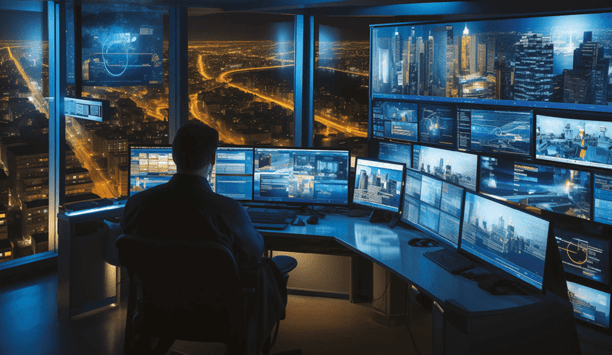
Aligning Physical And Cyber Defence For Total Protection
Download
Understanding AI-Powered Video Analytics
Download
Modernizing Access Control
Download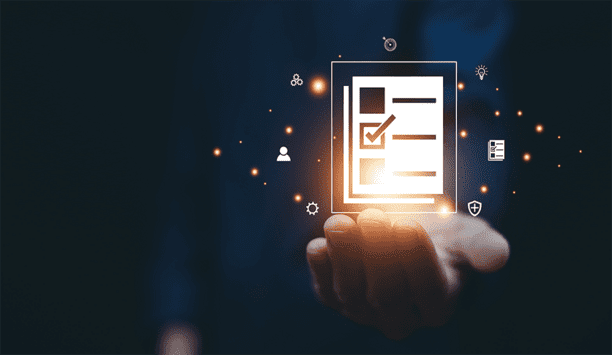
Enhancing Physical Access Control Using A Self-Service Model
Download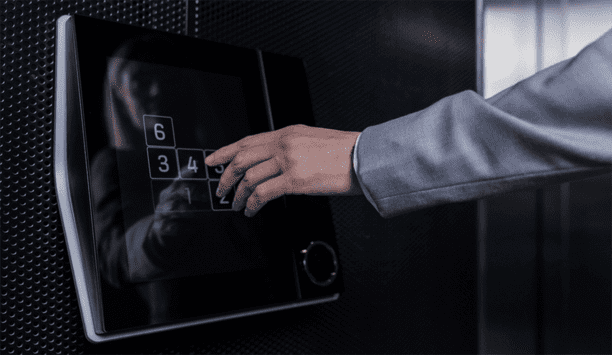
Open Credential Standards And The Impact On Physical Access Control
Download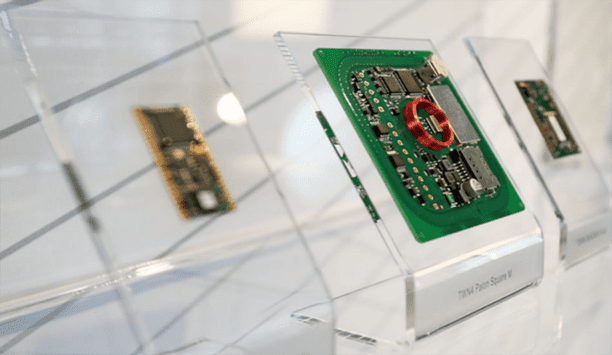
What is a universal RFID reader?
Download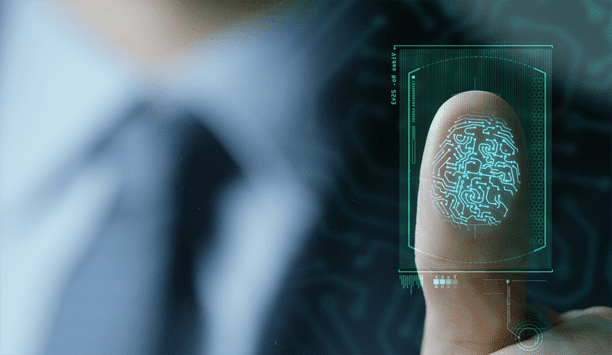
System Design Considerations To Optimize Physical Access Control
Download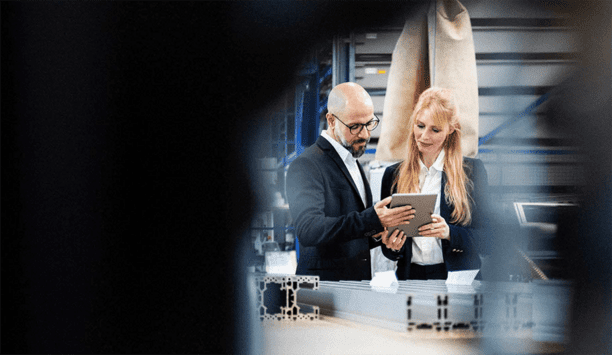
Milestone Cloud Deployment Guide
Download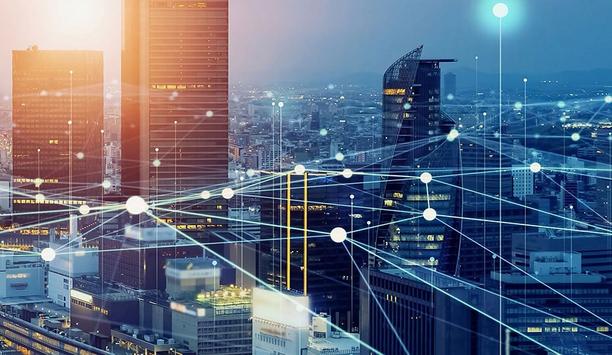
How Biometrics Are Reshaping Security In A Connected World
Download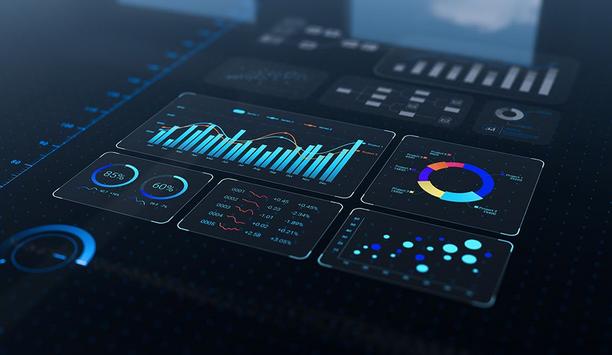
Using Artificial Intelligence (AI) To Automate Physical Security Systems
Download
Palm Vein Recognition
Download
Physical Access Control
Download
The 2024 State Of Physical Access Trend Report
Download
The Security Challenges Of Data Centers
Download


